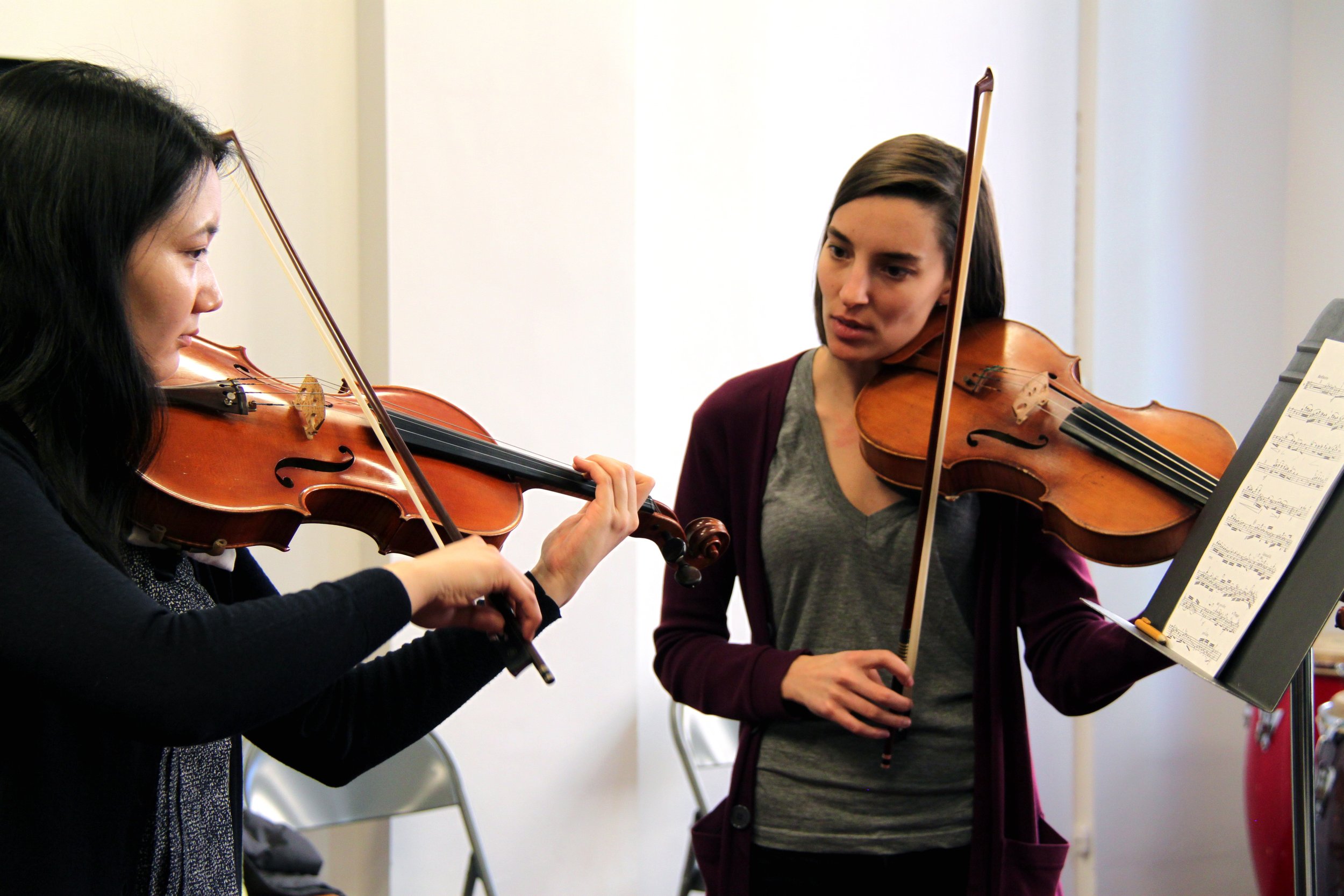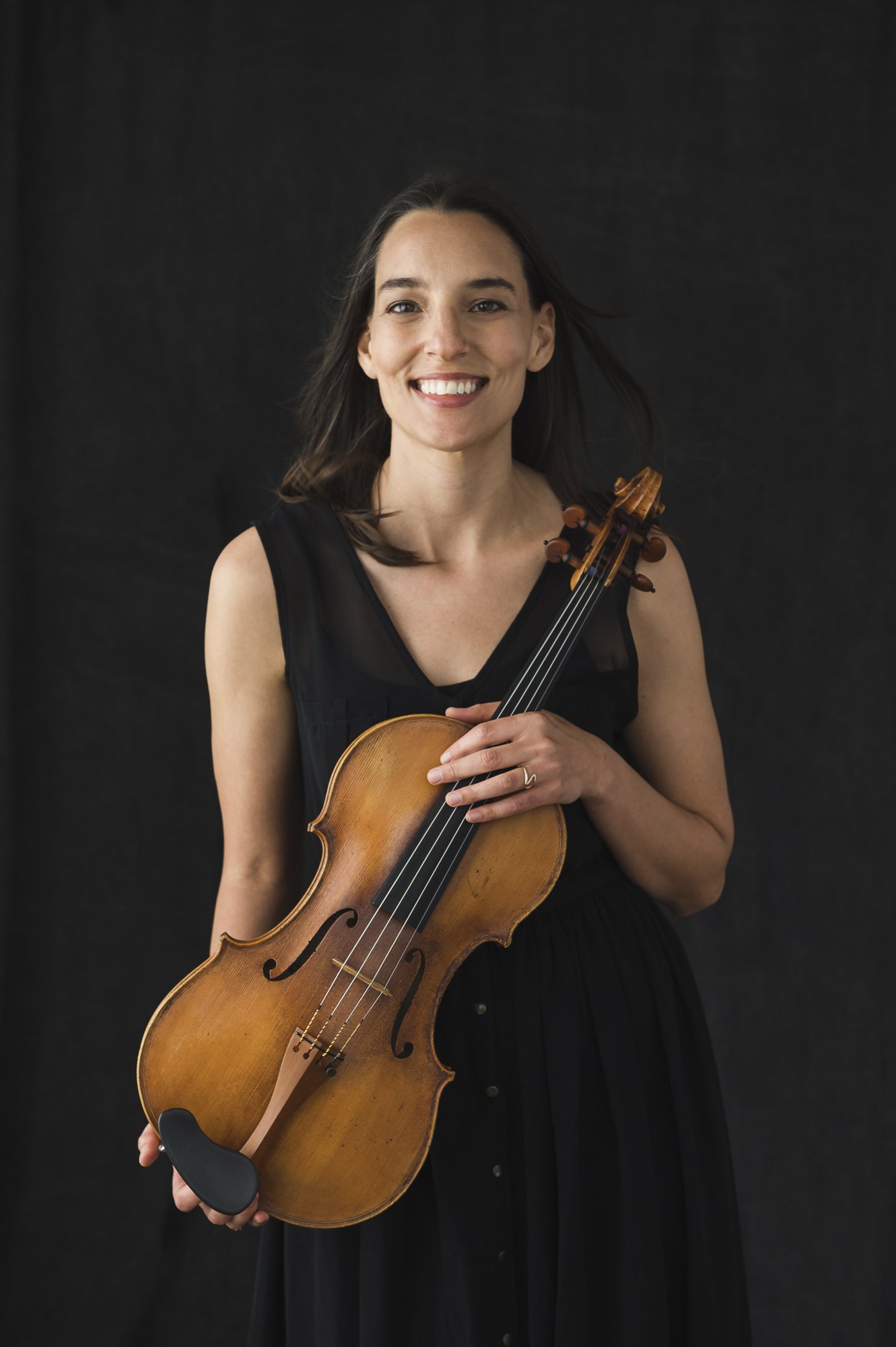Teaching
Regardless of where we find ourselves on the path, all musicians and aspiring musicians want the same thing at the core: to communicate with depth, freedom, and ease. The obstacles to bringing forth our musical ideas can vary from one person to the next—pain or injury, lack of confidence, or a need for technical guidance—but what propels us past each of these hurdles is the same: accurate information about the body, the music, and the instrument, delivered with clarity and compassion. That is what I aim to provide all of my students, regardless of their age or level.
In my case, it took a nearly career-ending injury for me to stumble across the body of knowledge that not only enabled me to heal, but to glimpse a future of limitless possibilities for myself and my students. The Till Approach is a system of string playing developed by violinist Sophie Till that is renowned for solving playing-related injuries and technical blocks, and it forms the backbone of my teaching. I'm also a longtime practitioner of the Alexander Technique and a teacher of the Art of Practicing, which trains musicians perform with freedom, confidence, and expressive power.
Former students have been admitted to the Juilliard MAP program, Talented Unlimited High School, and top ensembles in the Interschool Orchestras of New York, and have received outstanding scores at NYSSMA. I've also served on the faculty of Youth Orchestra of St. Luke's, Turtle Bay Music School and Sunnyside String School.
For more information, or to schedule a lesson in person or online, feel free to contact me! También hablo español.
Musician’s Focal Dystonia Recovery
If you’re struggling with Musician’s Focal Dystonia, the first thing I want you to know is that recovery IS possible. My story in a nutshell, which probably bears some similarities to yours:
In 2018 I began experiencing strange symptoms in my left hand, which seemed to appear practically overnight: a feeling of sluggishness, lack of control, and eventually involuntary curling in my ring and pinky fingers. Even though I intuited pretty quickly that I was dealing with MFD (not necessarily the case for everyone!), I faced the same dispiriting assessment often seen in medical literature and all over the internet: this affliction would be lifelong, progressive, and only treatable through Botox. Luckily, I also came across accounts of musicians who’d healed themselves—fully—through neuromuscular retraining. So I set about achieving the same results. Three years later, I finally resumed my playing career. So, how did I recover from MFD? The quick layperson’s version is that, by learning a new system of playing that was comfortable, sensible, and reliable, I gradually induced neuroplastic changes to my brain.
The path to recovery is not necessarily a straight one, nor is it easy, but with the help of a multidisciplinary strategy that promotes truly efficient technique and an accompanying retuning of the nervous system, I believe it is 100% possible.
If you’d like to know more, please feel free to contact me!

